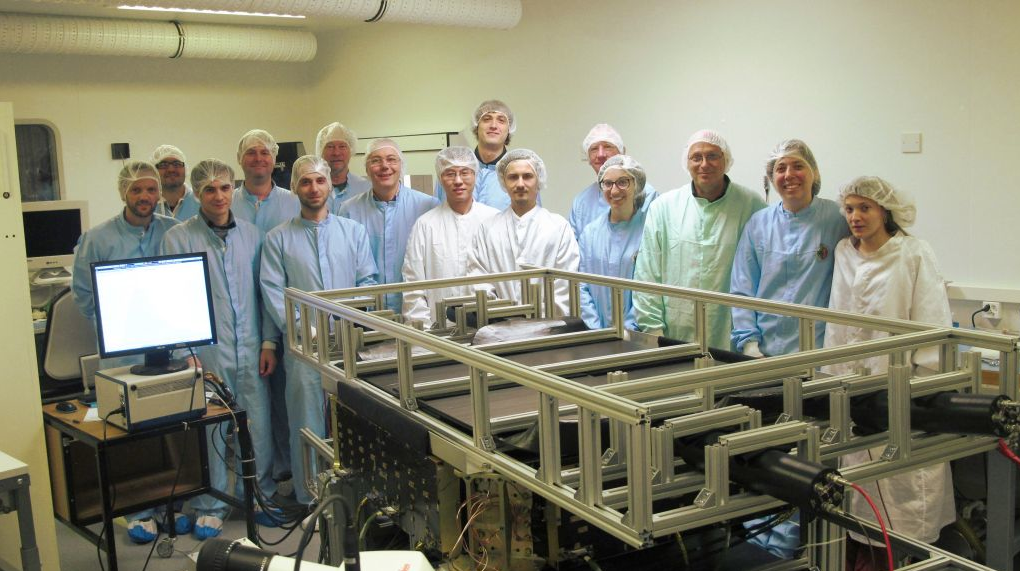The silicon tunghesten tracker converter (STK) consists of multiple layers of silicon micro-strip detectors interleaved with Tungsten converter plates. The principal purpose of the STK is to measure the incidence direction of high energy cosmic rays, in particular gamma rays, as well as the charge of charged cosmic rays. The STK identifies gamma rays by their conversions to charged particles in tungsten plates and infer their incident direction by the measuring with great precision the path of the charged particles within the STK.
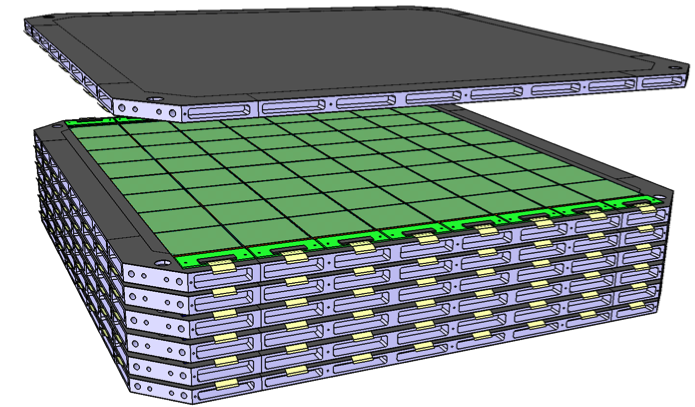
The STK is made of 6 tracking planes each consists of two layers of single-sided silicon strip detectors measuring the two orthogonal views perpendicular to the pointing direction of the apparatus. Three layers of tungsten plates of 1 mm thick are inserted in front of tracking layer 2, 3 and 4 for photon conversion.
The STK uses single-sided AC-coupled silicon micro-strip detectors. The sensor is 9.5 cm by 9.5 cm in size, 320 μm thick, and segmented into 768 strips with a 121 μm pitch. Only every other strip is readout but since analogue readout is used the position resolution is better than 80 μm for most incident angles, thanks to the charge division of floating strips. The photon angular resolution is expected to be around 0.2° at 10 GeV. The high dynamic range of the analog readout electronics of the STK allows to measure the charge of the incident cosmic rays
with high precision. The full tracker uses 768 sensors, equivalent to a total silicon area of ~7 m 2.
The Flight Model of STK has been built and delivered to China in April 2015, it has been successfully integrated and tested into with the full payload and the satellite.
The total weight of STK is of 155 kg. The total power consumption is of 85 W. It dimensions, including the outer envelop, are: 1.12m x 1.12m x 2.52m.
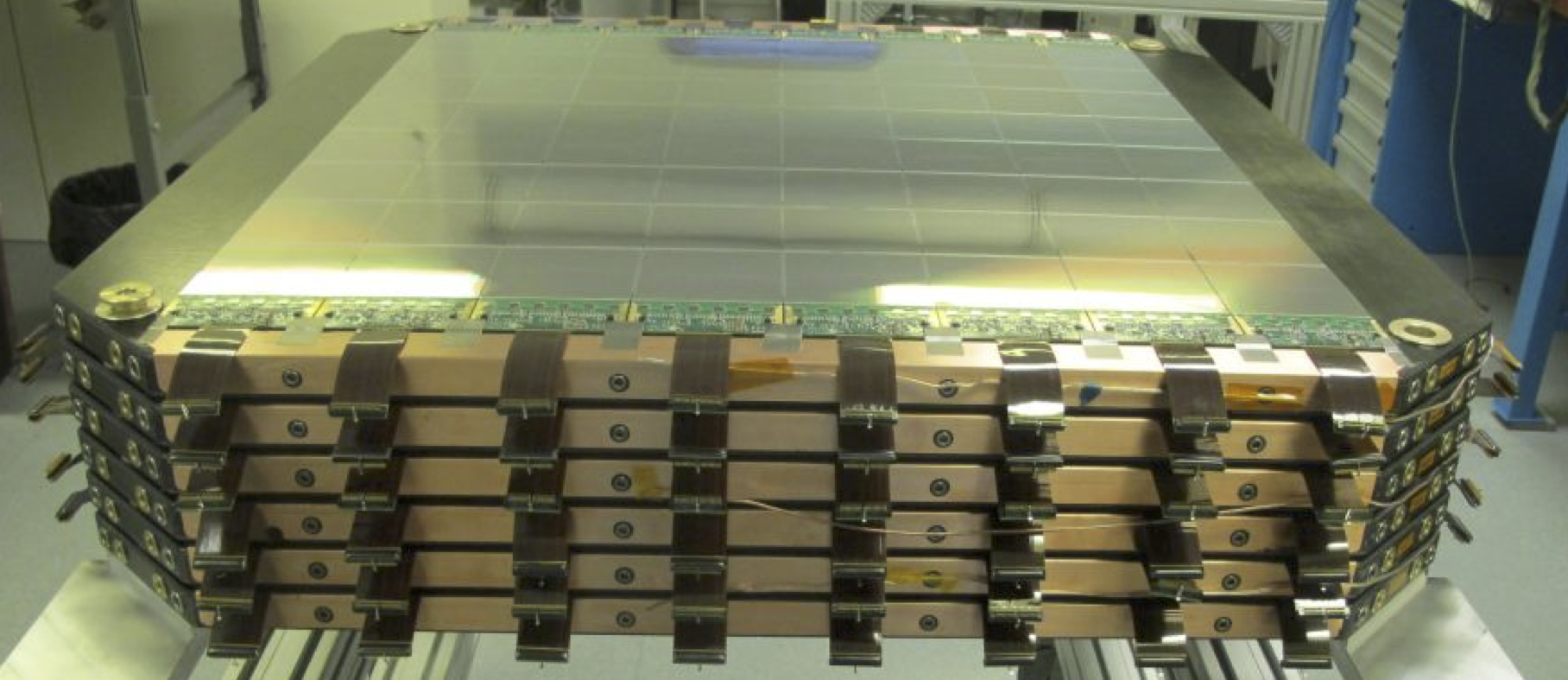
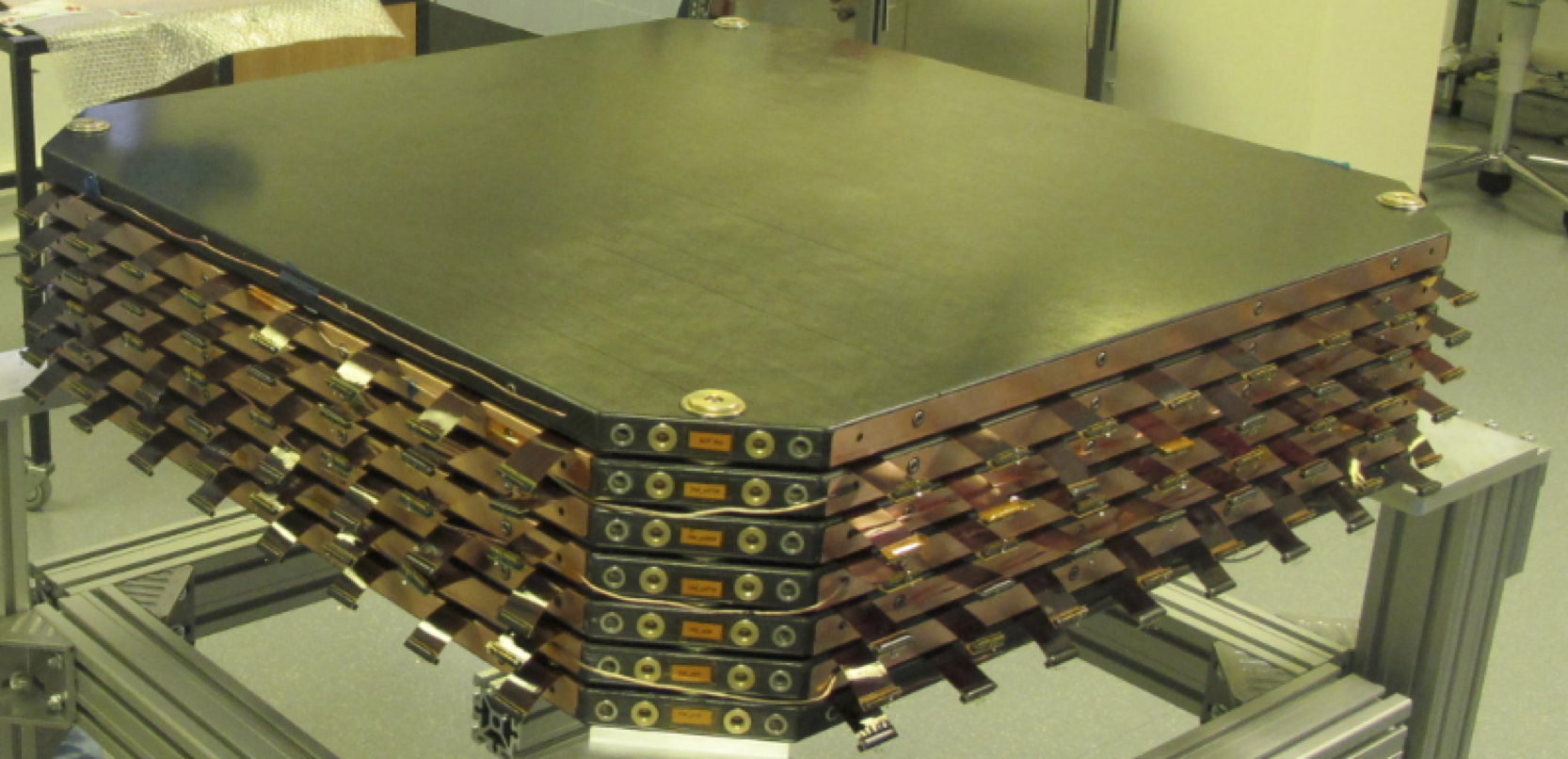

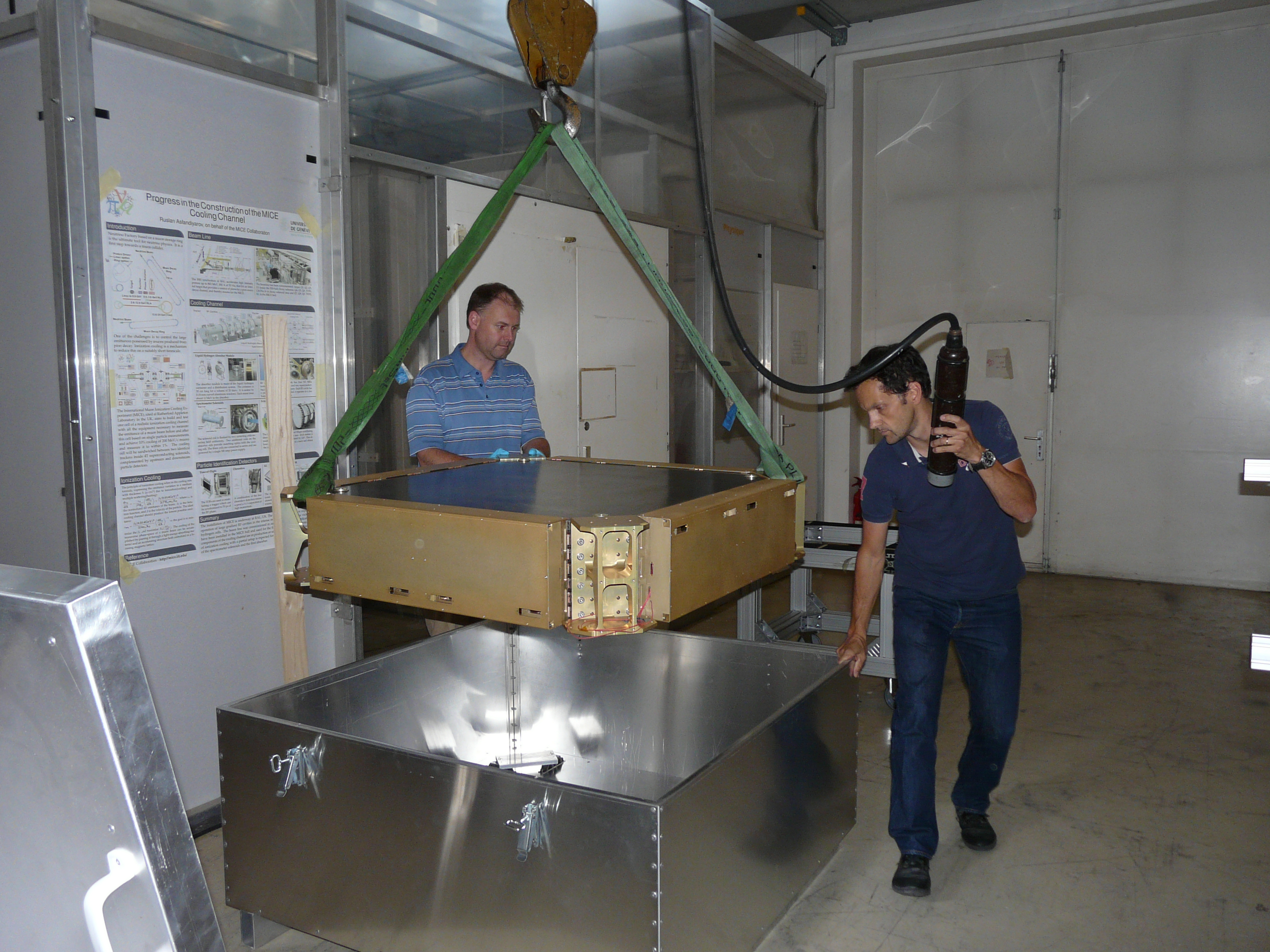
The DAMPE Tracker collaboration is formed by leading research institutes and universities from China,
Switzerland and Italy.
The institutes responsible for the STK construction are:
- DPNC (Département de physique nucléaire et corpusculaire), University of Geneva, Switzerland
- INFN (Istituto Nazionale di Fisica Nucleare) and University of Perugia, Italy
- IHEP (Institute of High Energy Physics), CAS, Beijing, China
- INFN (Istituto Nazionale di Fisica Nucleare) and University of Bari, Italy
- INFN (Istituto Nazionale di Fisica Nucleare) and University of Lecce, Italy
